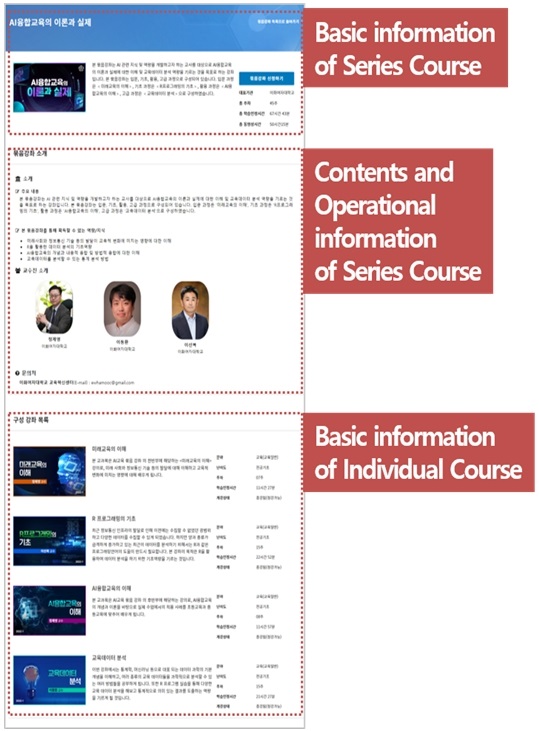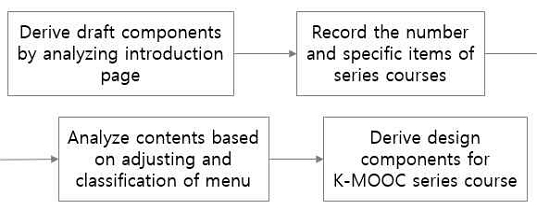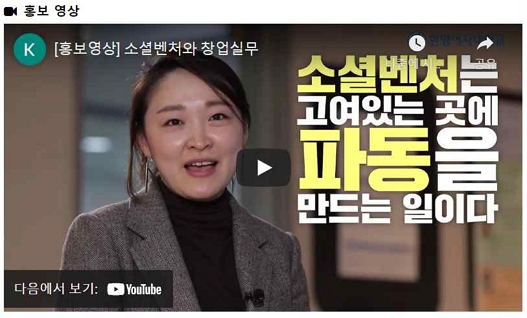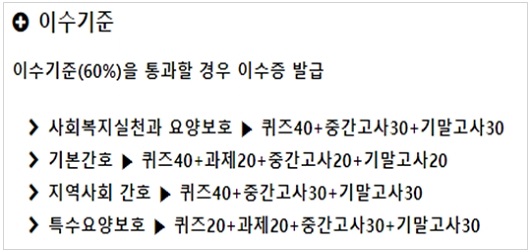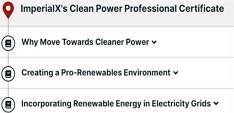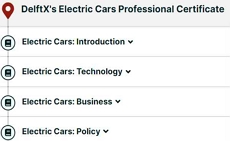
K-MOOC 묶음강좌 설계요소 탐색
Copyright ⓒ 2022 The Digital Contents Society
This is an Open Access article distributed under the terms of the Creative Commons Attribution Non-CommercialLicense(http://creativecommons.org/licenses/by-nc/3.0/) which permits unrestricted non-commercial use, distribution, and reproduction in any medium, provided the original work is properly cited.

초록
본 연구는 K-MOOC 묶음강좌 전체에 대한 귀납적 분석을 통해 설계요소를 도출함으로써 K-MOOC 묶음강좌 설계자에게 가이드라인을 제공하는데 목적이 있다. 이를 위해 현재까지 운영된 29개 묶음강좌의 설계 대상에 해당하는 안내 페이지를 영역과 메뉴 단위로 분석하고, 추가적인 확인이 필요한 메뉴의 내용 분석을 수행하였다. 연구 결과, 1차 분석에서는 3영역 32개 메뉴가 도출되었으며, 해당 메뉴를 형식적으로 제시하는 경우와 실제 내용을 포함하는 경우로 구분, 분석되었다. 또한, 32개 중 12개 메뉴를 4개 분야로 구분하여 29개 묶음강좌의 내용을 분석하였다. 이상의 분석 결과를 종합하여 3영역 26개 항목으로 이루어진 K-MOOC 묶음강좌의 설계요소와 항목별 특징을 제안하였다. 본 연구는 전수 분석을 통해 K-MOOC 묶음강좌의 전반적인 특성 및 환경에 적합한 설계요소를 개발하였다는 점에서 의의가 있다.
Abstract
The purpose of this study is to provide guidelines for designers by deducing design components through inductive analysis on entire K-MOOC Series Course. For this purpose, we analyzed information pages of 29 Series Courses operating up to now into classification and menu and then conducted content analysis for menu of additional investigation in need. As a result, 3 classifications and 32 menus were derived on the first analysis, and it was classified and analyzed that there are cases of presenting menu formally and including actual contents. Also, we divided 12 out of 32 menus into 4 categories and analyzed the contents of 29 Series Courses into them. Based on the above analysis results, design components of K-MOOC Series Course consisting of 3 classifications and 26 items with description was suggested. This study is significant developing design components suitable for the overall characteristics and environment of K-MOOC Series Course through total analysis.
Keywords:
Korean Massive Open Online Courses(K-MOOC), Series course, Design components, Total analysis on online course, Educational digital contents키워드:
한국형 온라인 공개강좌, 묶음강좌, 설계요소, 온라인강좌 전수 분석, 교육 디지털 콘텐츠Ⅰ. 서 론
디지털과 물리적 요소의 통합을 통해 비즈니스 모델을 변화시키고, 산업에 새로운 방향을 정립하는 디지털 전환[1]의 흐름은 교육 분야에까지 영향을 미치고 있다. 2020학년도 1학기부터 COVID-19로 인해 대면수업이 기본인 초·중·고등교육도 온라인수업으로 전환할 수밖에 없었던 사회적 상황은 교육에서의 디지털 전환을 가속화시키고 있다.
이러한 맥락에서 2015년 시작된 교육부 국가평생교육진흥원의 한국형 온라인공개강좌(Korean Massive Open Online Courses, K-MOOC)는 2018년부터 개별강좌뿐만 아니라 특정 주제에 대한 시리즈 형태의 묶음강좌를 개발, 운영함으로써 활용의 범위와 규모를 확대하고 있다[2]. 묶음강좌는 특정 분야에 대한 심도 있는 학습기회를 제공하기 위하여 복수의 강좌로 구성된 커리큘럼으로[3], 개별강좌를 이수하는 것으로 해당 주제에 대한 지식을 체계적으로 습득할 수 없는 한계를 보완하기 위한 소규모 교육과정으로 볼 수 있다[4].
글로벌 온라인공개강좌(Massive Open Online Courses, MOOC)에서 운영하는 묶음강좌는 주로 유료로 전문교육 과정의 이수 증명, 마이크로 디그리(Micro degree)로 명칭 되는 특정 단위의 학점 인정, 더 나아가 학위 수여를 목적으로 운영되고 있다[5]. 이에 비해 K-MOOC 묶음강좌는 현재 무료로 운영되고 있지만, 타 사업과의 연계 등을 통해 활용 유형의 다양화를 꾀하고 있다. 일례로, 2021년 교육부의 디지털 신기술 인재양성 혁신공유대학 사업에서는 디지털 관련 신기술의 변화에 유연하게 대처하기 위해 기존 교육과정보다 규모가 작은 마이크로 디그리를 개발하여 사업 수행대학 이외의 대학 학생 및 일반 국민도 혜택을 받을 수 있도록 K-MOOC에 탑재, 공유하는 계획을 포함하고 있다[6].
이러한 K-MOOC 묶음강좌의 양적 팽창과 함께 질적 발전을 위해서는 체계적이면서도 효과적인 묶음강좌의 설계가 선행되어야 한다. 하지만 MOOC 묶음강좌에 대한 선행연구는 특정 묶음강좌의 개발 절차를 묶음강좌 설계가 아닌 공동 설계 측면을 강조하여 기술하거나[7], 특정 묶음강좌의 수강신청자의 특성 및 이수자 수와 같은 운영 현황을 분석한 연구로 한정된다[8]-[9]. 즉, 묶음강좌의 설계를 위해서는 하나의 사례로서 특정 묶음강좌의 현황을 기술, 분석하는 연구를 넘어 전반적인 묶음강좌를 대상으로 어떠한 요소를, 어떻게 설계할 것인가에 대한 연구를 수행할 필요가 있다.
본 연구에서는 K-MOOC 묶음강좌를 대상으로 무엇을 설계해야 하는가에 초점을 맞춰 K-MOOC 묶음강좌의 설계요소를 개발하였다. 이를 위해 MOOC 묶음강좌의 종류와 설계관련 고찰을 통해 분석 대상을 확인하고, K-MOOC 묶음강좌에 대하여 전수 분석을 수행하였다.
Ⅱ. 이론적 배경
2-1 MOOC 묶음강좌의 종류
다음은 대표적인 글로벌 MOOC 기관인 Coursera, edX와 Udacity에서 운영하는 묶음강좌와 각 묶음강좌별 특징, 구성 개별강좌 수와 유형을 제시한 표이다.
MOOC 묶음강좌는 학점·학위와 무료 청강 여부를 기준으로, 비학위·비학점 프로그램 형태로 무료 청강 이 가능한 A유형, 비학위 프로그램이지만 개설·활용기관에서 학점 인정 강좌로 운영 가능하며 무료 청강이 가능한 B유형과 별도 학위 프로그램으로 무료 청강이 불가능한 C유형으로 구분된다.
본 연구대상인 K-MOOC 묶음강좌는 현재 무료로 운영되며 개별강좌 단위 이수 인정체계를 따르는 점에서 이수증 유료 발급 및 개별·묶음 단위의 이수 인정체계가 공존하는 글로벌 MOOC와 다르다. 즉, K-MOOC 묶음강좌는 글로벌 MOOC의 세 가지 유형과는 다른 형태임을 알 수 있다.
2-2 MOOC 묶음강좌의 설계
MOOC 묶음강좌의 설계와 관련된 연구 및 자료로, 먼저 K-MOOC 사업계획서 양식 중 ‘3.2. 묶음 교육과정의 체계성’에 대한 평가요인을 들 수 있다[13]. 해당 평가요인은 묶음강좌의 내용 및 특성을 확인하고, 수강 여부를 선택하는 데 도움이 되는 일부 내용으로 구성되어 있다.
다음으로, 김선영, 이지연, 김재선(2019)은 글로벌 MOOC 묶음강좌를 구성하는 개별강좌의 분석을 통해 위계형, 병렬형, 선택형의 세 가지 이수체계 유형을 제안하였다[9].
상기의 두 사례 모두 MOOC 묶음강좌의 설계에 대한 일부 내용에 초점을 두고 있어, 전체적인 강좌 설계 차원으로의 확장이 필요하다고 볼 수 있다.
2-3 MOOC 묶음강좌의 설계 대상
다음 표는 MOOC 개별강좌의 설계요소와 관련된 선행연구를 설계 대상의 관점에서 기술한 것이다. 설계요소에 포함되는 내용은 크게 학습목표, 학습내용, 학습활동, 학습지원, 그리고 학습환경으로 구분할 수 있다.
MOOC 개별강좌의 설계요소는 실제 학습설계와 관련된 대상인 데 비해, MOOC 묶음강좌의 경우에는 묶음강좌와 구성 개별강좌와 관련된 정보를 어떻게 구성, 제시하느냐에 초점이 맞춰져 있다.
이러한 차이점은 물리적인 설계 대상을 통해 명확히 확인할 수 있다. 즉, 개별강좌의 물리적 설계 대상은 교수자 및 학습자가 교수학습 활동과 직접적인 관련이 있는 동영상, 학습자료, 하이퍼텍스트, 문서, 오디오, 퀴즈, 위키, 과제 등을 포함한다[17]. 이에 비해 묶음강좌의 물리적 설계 대상은 다음 그림 1과 같이 묶음강좌에 대한 기본정보 및 내용·운영과 관련된 상세정보, 그리고 묶음강좌를 구성하는 개별강좌에 대한 기본정보를 포함하는 안내 페이지로 볼 수 있다.
Ⅲ. 연구방법
본 연구는 MOOC 묶음강좌의 전체적인 설계 차원의 선행연구가 미비한 점을 고려하여 이론적 근거에 따른 연역적 분석이 아닌 사례 및 데이터 기반의 귀납적 분석을 수행하였다. 귀납적 분석은 개념, 테마, 모델을 유도하는 방법으로, 원시 데이터를 요약하고 핵심 주제를 포함하는 영역을 개발함으로써 데이터의 의미를 생성하는 데 목적이 있다[18].
연구 대상은 현재까지 개발, 운영된 전체 29개 K-MOOC 묶음강좌로, 그림 1에 제시한 묶음강좌의 설계 대상인 안내 페이지를 분석하였다. 분석 도구는 연구 대상인 묶음강좌와 메뉴 수를 고려하여 구글 스프레드시트를 사용하였고, 2022년 5월 30일부터 7월 2일까지 약 5주간 분석을 수행하였다.
연구는 ‘원시 데이터 준비·정리-텍스트 자세히 읽기-범주 생성-중복 또는 누락 텍스트 확인-계속적인 수정 및 개선’의 귀납적 분석 절차[18]를 토대로 진행되었다. 이 중, 본 연구에서 수행한 범주 생성, 중복 또는 누락 텍스트 확인과 계속적인 수정 및 개선 단계의 세부적인 내용은 다음과 같다.
첫째, 귀납적 분석을 위한 기본 틀과 추가 항목을 도출하였다. 기본 틀은 영역과 메뉴로 구성되며, 각각 K-MOOC 안내 페이지의 내용 구획 방식과 메뉴명을 대상으로 설정하였다. 그리고 기본 메뉴로 설명이 어려운 항목과 다른 묶음강좌에 존재하지 않는 메뉴명을 메뉴에 추가하였다.
둘째, 메뉴별로 해당 메뉴를 포함하는 묶음강좌를 계수하였다. 묶음강좌 수는 메뉴명의 존재 여부에 따른 ‘형식’과 메뉴에 대한 내용 유무에 따른 ‘내용’을 기준으로 세었으며, 다중요소로 구성된 메뉴의 경우에는 하위요소별 분석을 추가로 수행하였다. 또한, 계수 과정에서 특이사항이 있는 경우 해당사항을 기록하였다.
셋째, 선행 단계에서 도출한 영역 및 메뉴, 메뉴별 묶음강좌 수와 기록을 바탕으로 조정 또는 추가로 확인할 필요가 있는 메뉴를 도출하여 내용 분석을 수행하였다. 이때, 유사한 메뉴이거나 메뉴 간 연관된 내용이 있는 경우에는 해당 메뉴를 함께 분석하였다. 마지막으로, 조정 및 내용 분석 결과를 종합하여 K-MOOC 묶음강좌의 설계요소를 개발하였다.
Ⅳ. 연구결과
4-1 K-MOOC 묶음강좌 메뉴 분석
다음 표는 K-MOOC 29개 묶음강좌의 안내 페이지 분석을 통해 일차적으로 도출된 영역과 메뉴를 제시한 것이다. 메뉴는 총 32개로, 설계 위치와 내용에 따라 세 개의 영역으로 분류하였다. 각 메뉴별로 형식적·물리적으로 제시한 강좌 수와 실제 내용을 포함하고 있는 강좌 수, 그리고 특이사항은 표 5와 같다.
일차로 도출한 32개의 메뉴는 크게 대부분의 묶음강좌에 제시된 메뉴와 일부 강좌에만 설계된 메뉴로 구분할 수 있다. 먼저, 대부분의 묶음강좌에 제시된 메뉴는 총 19개로 묶음강좌 기본정보 영역의 7개 메뉴, 묶음강좌 내용·운영 정보 영역의 성취 역량·지식, 교수진 소개와 문의처 메뉴, 그리고 구성 개별강좌별 기본정보 영역에서 이수기준을 제외한 나머지 8개 메뉴에 해당한다. 이 중, 다중요소로 구성된 메뉴가 각 영역별로 하나씩 존재하며, 해당 메뉴인 묶음강좌 소개, 주요내용 및 개별강좌 소개에 대해서는 내용 분석이 필요한 것으로 나타났다. 나머지 13개에 해당하는 일부 강좌에만 설계된 메뉴는 상기의 다중요소로 구성된 세 개의 메뉴와 함께 조정 또는 추가적인 내용 분석 대상임을 확인하였다.
4-2 K-MOOC 묶음강좌 설계 내용 분석
표 5에서 조정 및 내용 분석이 필요한 메뉴를 내용의 유사성 및 다른 메뉴와의 연관성에 따라 1) 강좌 소개 및 학습내용, 2) 이수체계, 3) 강좌와 대상 학습자 특성, 그리고 4) 추가 학습자료와 관련된 설계 내용으로 분류, 분석하였다.
강좌 소개 및 내용 관련 메뉴에는 묶음강좌소개, 주요내용, 개별강좌소개, 목표-내용 모식도와 홍보영상이 있다. 이 중, 묶음강좌소개는 아래 표와 같이 강좌내용·역량, 목적, 이수체계·난이도, 대상 학습자, 구성 개별강좌와 배경 순으로 총 6개 항목의 조합에 따라 14개 유형으로 이루어져 있다.
다음 표 7은 주요내용의 설계 내용을 분석한 결과로, 순서는 다르지만 묶음강좌소개와 동일한 6개 항목의 조합에 따른 14개 유형으로 구성되어 있다.
표 6과 표 7을 통해 묶음강좌소개와 주요내용은 동일한 항목으로 구성되어 있고, 두 메뉴 모두 강좌내용·역량만을 제시하는 강좌가 많음을 알 수 있다. 특히, 묶음강좌 29강좌 중 11강좌는 묶음강좌소개와 주요내용이 동일하거나 유사도가 높게 나타나 중복 설계된 것으로 나타났다. 또한, 주요내용에서 개별강좌별로 내용을 제시한 4강좌 중 3강좌는 개별강좌소개를 요약하여 주요내용에 제시한 데 비해, 1강좌는 주요내용과 개별강좌소개의 내용이 동일하여 수정이 필요한 것으로 분석되었다.
목표-내용모식도는 앞서 분석한 3개 메뉴와는 달리 1개의 묶음강좌에만 설계되었으며, 다음 그림과 같이 강좌의 비전 및 목표를 4개의 개별강좌 관련 요약 내용과 함께 제시함으로써 주요내용을 시각화하였다.
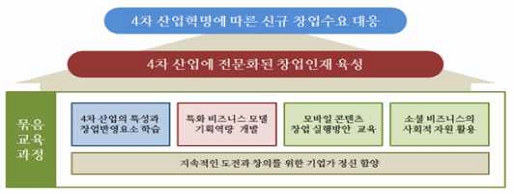
Example of objects-contents diagram* Present the captured image of webpage (http://www.kmooc.kr/series_view/19) in Korean
마지막으로 홍보영상 역시 1개의 묶음강좌에만 설계되었으며 그림 4와 같이 묶음강좌 전반에 대한 간단한 소개를 제시한 메뉴로, 형식상으로는 썸네일을 영상화한 형태로 볼 수 있다.
묶음강좌에서의 이수는 크게 전체 차원의 이수체계와 각 개별강좌의 이수기준으로 구분하여 살펴볼 수 있다. 먼저, 전체적인 차원에서 묶음강좌를 구성하는 개별강좌의 난이도 및 이수 순서 등을 제시하는 이수체계와 직접적인 관계가 있는 메뉴는 이수체계도이다. 다음 그림은 이수체계도를 설계, 제시한 6개 강좌 중 2강좌의 이수체계도를 제시한 것이다.
상단의 그림은 Connected Car와 Autonomous Care 두 개의 분야에 대하여 각각 3강좌와 2강좌가 위계적인 관계를 가지는 선택형 방식의 이수체계도를 나타낸 것이다. 그리고 하단의 그림은 상단의 이수체계도와 같이 위계형과 병렬형이 혼합된 선택형 이수체계로, 개별강좌의 난이도에 따라 대상학습자를 제시한 점이 특징이라 할 수 있다.
시각적으로 이수체계를 설계한 이수체계도와 달리 상단의 표 6의 묶음강좌소개와 표 7의 주요내용 메뉴에 이수체계와 난이도 관련 내용을 기술하는 경우도 존재한다. 예를 들어, 그림 6의 강좌는 순차적 이수체계를 가지고 있어 그림 5과 같은 도식이 아닌 주요내용 메뉴에 텍스트 방식으로 제시하였다.
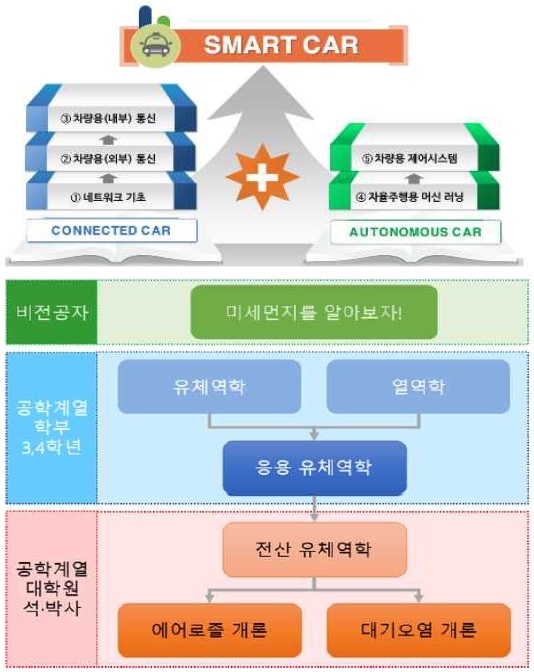
Example of curriculum flowchart* Present the captured image of web pages (http://www.kmooc.kr/series_view/19, /3) in Korean

Example of curriculum flow presented in text* Present the captured image of webpage (http://www.kmooc.kr/series_view/30) in Korean
한편, 묶음강좌 전체가 아닌 각 개별강좌 차원에서 이수기준을 제시한 묶음강좌는 단 1강좌로, 아래 그림과 같이 구성 개별강좌별로 이수점 및 평가에 반영되는 학습활동과 해당 학습활동의 점수를 제시하고 있다.
강좌 및 해당 강좌의 대상 학습자 특성과 관련된 메뉴로는 장점, 사전지식과 대상 학습자를 들 수 있다. 먼저, 장점은 전체 29강좌 중 19강좌에서 제시하고 있다. 이 중, 12강좌는 그림 8과 같이 주요내용 메뉴의 일부 내용을 그대로 제시하거나 장점으로 볼 수 없는 내용을 제시하여 수정 또는 삭제할 필요가 있는 것으로 분석되었다.
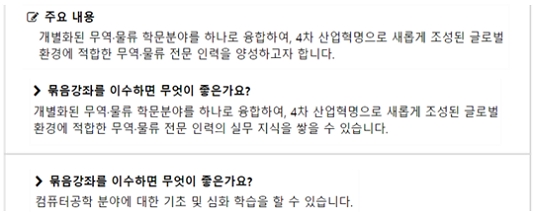
Example similar to main contents menu or inappropriate as a merit* Present the captured image of webpage (http://www.kmooc.kr/series_view/13, /6) in Korean
사전지식을 제시한 강좌는 총 18강좌로, 다음 그림과 같이 9강좌는 사전지식이 필요없음을 안내하였다. 그리고 나머지 9강좌 중 3강좌는 특정 주제 및 과목을, 6강좌는 사전지식과 관련하여 학습자의 특정 조건을 제시하였다.
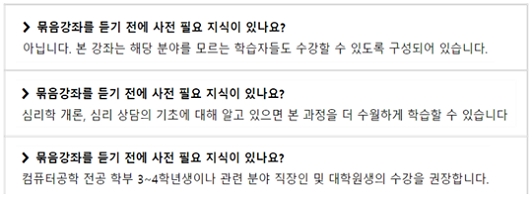
Example of presenting prior knowledge* Present the captured image of webpage (http://www.kmooc.kr/series_view/31, 27, 6) in Korean
마지막으로, 대상 학습자는 형식상으로 2강좌에서 제시하였지만, 실제 8강좌에서 주요내용, 강좌소개, 사전지식 메뉴 등 다른 메뉴를 통해 내용을 제시하여 총 10강좌에 설계되어 있음을 알 수 있다. 다음 그림은 대상학습자 관련 내용을 주요내용 메뉴에 제시한 사례로, 대상학습자 관련 내용을 분리하여 별도 메뉴로 만들고, 주요 내용을 수정할 필요가 있다.
MOOC에서 제공하는 활동 관련 자원에 추가로 제공하는 학습자료 관련 메뉴로는 교재와 참고문헌이 있다. 참고문헌을 제공한 강좌는 1강좌, 교재 관련 정보를 제공한 강좌는 3강좌이다. 이 중, 교재 정보는 모두 다음과 같이 “별도 교재가 필요하지 않고, 강의자료 파일을 제공하고 있음”을 안내하였다.
4-3 K-MOOC 묶음강좌 설계요소
이상의 K-MOOC 묶음강좌 메뉴와 설계 내용의 추가적인 분석 결과를 종합, 정리하여 K-MOOC 묶음강좌의 설계요소와 구성 항목별 특징을 제시하면 다음 표 8과 같다.
K-MOOC 묶음강좌의 설계요소는 영역과 영역별 항목으로 이루어져 있다. 영역은 현재 K-MOOC에서 제공하는 묶음강좌별 안내 페이지의 내용 구획을 기준으로 구분하였으며, 묶음강좌 기본정보, 묶음강좌 내용·운영정보와 구성 개별강좌 기본정보가 이에 해당한다. 26개의 항목은 일차로 도출된 32개 메뉴의 내용 분석을 통해 내용이 중복되거나 유사한 메뉴를 삭제 또는 통합한 결과로, 각 항목의 특징과 설계 시 유의할 점을 함께 기술하였다.
Ⅴ. 논의 및 결론
본 연구는 온라인 마이크로 디그리의 효과성, 유연성 및 확장 가능성에 기반하여 K-MOOC 묶음강좌 전수 분석을 통해 설계요소를 제안하였다. 연구의 의의와 향후 연구에 대하여 논의하면 다음과 같다.
첫째, 본 연구는 기술적·발견적·귀납적 분석방법을 적용한 측면에서 사례연구[19]와 유사하다고 볼 수 있다. 하지만 하나 이상의 사례를 선정, 분석하는 사례연구와 달리 현재까지 운영된 K-MOOC 묶음강좌를 전수 분석함으로써 K-MOOC 묶음강좌의 특성 및 환경에 적합한 설계요소를 전체적인 프레임워크 차원에서 도출하였다는 점에서 의의가 있다.
둘째, 본 연구를 통해 MOOC 개별강좌에 국한되었던 연구 범위가 묶음강좌로 확대될 수 있다. MOOC 개별강좌에 대한 설계 체크리스트 및 구성요소 관련 선행연구[14]-[16]가 개별강좌의 질 관리를 지원하는 것과 같이, 본 연구결과는 K-MOOC 묶음강좌를 설계하는 전문가에게 무엇을 설계해야 하는가에 대한 실제적인 가이드라인을 제공할 것으로 예상된다. 또한, 본 연구결과를 적용한 묶음강좌 안내페이지를 통해 해당 강좌를 이수하고자 하는 학습자에게 정확하고 적절한 정보를 제시하는 데 도움이 될 것으로 기대한다.
셋째, 설계요소의 세부 내용은 강좌에 따라 다르게 적용될 수 있음을 확인하였다. 일례로, 이수체계는 도식으로 설계되기도 하고, 간단히 텍스트 기반의 설명으로 제시되는 것으로 나타났으며, 선행연구[9]에서는 특정 사례에 대한 분석을 근거로 이수체계도의 필요성을 강조하였다.
하지만 본 연구의 전수분석을 통해 위계형 또는 병렬형과 같은 단일 구조인 경우에는 굳이 도식화할 필요가 없음을 확인하였다. 관련하여 본 연구에서 살펴본 K-MOOC 묶음강좌의 ‘무엇’을 설계할 것인가에 대한 결과를 기반으로 해당 구성요소를 ‘어떻게’ 설계할 것인가에 대한 후속 연구가 필요하다.
넷째, K-MOOC 묶음강좌 설계자에게는 당연하지만, 학습자에게는 당연하지 않은 구성요소의 확인이 필요하다. 사전지식과 교재 메뉴의 분석 결과, 일반적으로 설계자는 특별한 사항이 없으면 해당 구성요소를 설계하지 않는 것으로 나타났다. 하지만 학습자 입장에서는 ‘사전지식 또는 별도의 교재가 필요 없다’는 정보를 제공하는 것과 제공하지 않는 것은 강좌의 수강을 결정하거나 학습을 진행하는데 있어 차이가 발생한다. 그러므로 MOOC 설계자는 학습 편이성을 고려[14]하여 ‘필요 없음’에 대한 정보를 제시해야 한다.
마지막으로, 본 연구는 현존 K-MOOC 묶음강좌의 설계 대상인 안내 페이지를 분석 대상으로 선정하여, 귀납적 분석을 통해 설계요소를 도출하였다. 그래서 대부분의 묶음강좌에 설계된 메뉴는 별도의 내용 분석 및 수정 없이 그대로 설계 프레임워크의 구성요소로 반영하였다. 추후에는 전문가 검토 및 학습자 설문 등을 통해 효과적인 구성요소가 무엇인지 확인하고, 이를 설계 프레임워크에 반영할 필요가 있다.
Acknowledgments
본 연구는 홍익대학교 신임교수 연구지원비에 의하여 지원되었음
References
- S. J. Berman and R. Bell, Digital transformation: Creating new business models where digital meets physical, IBM Global Services, Somers: NY, Executive Report, 2011.
-
J. H. Ahn and J. Y. Lee, “The Learning Behavior of K-MOOC Learners and K-MOOC Service Recommendations,” Journal of the Korean Society for Information Management, Vol. 37, No. 3, pp. 221-252, September 2020.
[https://doi.org/10.3743/KOSIM.2020.37.3.221]

- National Institute for Lifelong Education. K-MOOC Series Course [Internet]. Available: http://www.kmooc.kr/series/, .
-
B. Lee, “The analysis of current MOOC trends in the USA major MOOC platforms: the role of MOOCs and implications for K-MOOC operation,” The Journal of Educational Information and Media, Vol. 23, No. 2, pp. 227-251, June 2017.
[https://doi.org/10.15833/KAFEIAM.23.2.227]

- EDUCAUSE. MOOC-Based Alternative Credentials: What's the Value for the Learner? [Internet]. Available: https://er.educause.edu/articles/2019/6/mooc-based-alternative-credentials-whats-the-value-for-the-learner/, .
- Ministry of Education. Announcing the Basic Plan for the University of Innovation and Sharing of Digital New Technology Talent Cultivation [Internet]. Available: https://www.moe.go.kr/boardCnts/view.do?boardID=294&boardSeq=83654&lev=0&searchType=null&statusYN=W&page=1&s=moe&m=020402&opType=N#/, .
-
S. Sancassani, P. Corti, and V. Baudo, “An International Collaboration in the Design Experience of a MOOC Series,” in Proceeding of European Conference on Massive Open Online Courses 2017, Madrid: Spain, pp. 113-119, 2017.
[https://doi.org/10.1007/978-3-319-59044-8]

-
F. Suter and C. Lüthi, “Delivering WASH education at scale: evidence from a global MOOC series,” Environment & Urbanization, Vol. 33, No. 1, pp. 99-116, February 2021.
[https://doi.org/10.1177/0956247820987759]

- S. Kim, J. Lee, and J. Kim, "A study on the type of K-MOOC series course in the engineering field: focusing on 'Big data and Artificaial Inteeligence' at Seoul National University," in Proceeding of Engineering Education Conference, Jeju: Korea, p. 65, 2019.
- Coursera. Achive your goals on Coursera [Internet]. Available: https://about.coursera.org/how-coursera-works/, .
- edX. Compare Products [Internet]. Available: https://www.edx.org/products/, .
- Udacity. Career resources and services [Internet]. Available: https://udacity.zendesk.com/hc/en-us/articles/360015665391-Career-resources-and-services/, .
- Ministry of Education. K-MOOC Request for Proposal about series course in 2022 [Internet]. Available: https://www.nile.or.kr/contents/contents.jsp?bkind=basic&bcode=CABAAAA&bmode=view&idx=BCJDFCECEEDBE&pageNo=1/, .
-
H. Jung, Y. Shin, Y. Kang, and E. Lee, “Development of Quality Certification Standards for MOOC,” Journal of Digital Contents Society, Vol. 20, No. 4, pp. 739-748, April 2019.
[https://doi.org/10.9728/dcs.2019.20.4.739]

-
H. Cha, “A Development Study of Checklists for Quality Assurance of K-MOOC,” Journal of Lifelong Learning Society, Vol. 14, No. 4, November 2018.
[https://doi.org/10.26857/JLLS.2018.11.14.4.137]

- J. R. Corbeil, M. E. Corbeil, and B. H. Khan, The MOOC Case Book – Case Studies in MOOC Design, Development and Implementation. Ronkonkoma, NY: Linus Learning, 2015.
-
H. Jung, J. An, and H. Lee, “Search for Designing Strategies of E-Learning for Engineering Through Analyzing the Best Practices of Overseas MOOCs,” Journal of Practical Engineering Education, Vol. 8, No. 1, pp. 31-37, June 2016.
[https://doi.org/10.14702/JPEE.2016.031]

-
D. R. Thomas, “A General Inductive Approach for Analyzing Qualitative Evaluation Data,” American Journal of Evaluation, Vol. 27, No. 2, June 2006.
[https://doi.org/10.1177/1098214005283748]

- R. K. Yin, Case Study Research: Design and Methods, 3rd ed. Thousand Oaks, CA: Sage Publications, Inc., 2002.
저자소개
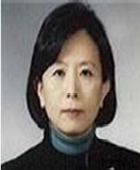
1987년 : University of Southern California (교육학석사)
2012년 : 서울대학교 대학원 (교육학박사-창의적 문제해결 지원시스템 설계원리)
2012년~2015년: 서울대학교 교육학과 시간강사
2012년~2019년: 서울대학교 교육연구소 객원연구원
2013년~2019년: 홍익대학교 교육학과 초빙교수
2019년~현 재: 홍익대학교 교양과 부교수
※관심분야 : 온라인 학습(Online Learning), 학습환경설계(Learning Environment Design), 온라인 지원시스템(Online Support System) 등
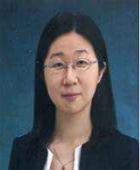
2005년 : 서울대학교 대학원 (공학석사)
2013년 : 서울대학교 대학원 (교육학박사-적응적 학습 기반 이러닝 설계전략)
2013년~2018년: 서울대학교 교수학습개발센터 연구조교수
2018년~2021년: 서울대학교 교수학습개발센터 연구부교수
2021년~현 재: 서울대학교 기초교육원 연구부교수
※관심분야 : 온라인 학습(Online Learning), 온라인 공개강좌(Massive Open Online Courses), 학습관리시스템(Learning Management System), 학습경험 설계(Learning Experience Design)

